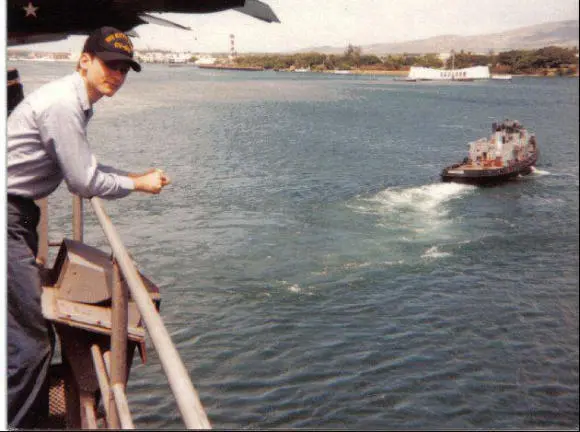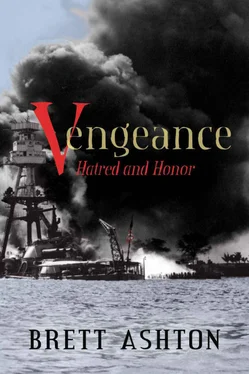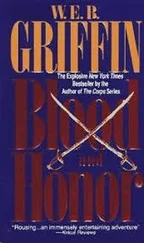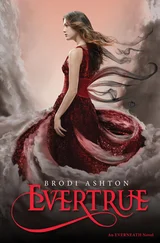The crew of the North Carolina really did meet with the survivors of the I-19 and return a torpedo fragment to them as described. There really was a man who flew to Japan thirty-nine years after the surrender, to return the sword of a former Japanese officer. His name is Walter Shackelford. The man he returned it to was Takuya Seno. All of these men either remained friends to this day, or for some of them, for the rest of their lives.
Last, but certainly not least, is Admiral William F. Halsey. Yes, he was real. Although sometimes I’m sure the Japanese didn’t think so. Enough said.
Oh! I almost forgot Bob Hope, but I think the Japanese probably didn’t believe in him much, either.
Regarding the ships, all of them mentioned in the story were real, except the Buffalo (and possibly the I-57 , which I could find no history for). I tried to put them in actual context with history. The battleship North Carolina is still quite real and is now a museum in Wilmington, North Carolina. It is a fabulous place to visit, and there are several books you can read that will tell you of the Showboat ’s real adventures. They provided me with the factual information that, in part, is what the story in this book is based on. My favorites are Boys of the Battleship North Carolina by Cindy Horrell Ramsey and North Carolina by Captain Ben W. Blee, USN (Ret)—who, incidentally, was the ship’s intelligence officer during the war.
The exception to the above paragraph is the USS William C. Lawe ( DD-763 ), which was still under construction at the end of the war. The only reason this ship is in this book is because before I joined the navy, I toured this ship when it visited a town close to my hometown.
The Buffalo ( CL-84 ) never existed. There were plans to build this ship, but construction was cancelled at the end of the war. It gave me a wonderful opportunity as an author to take a ship and do with it anything I wanted to with only minimal damage to actual history. The story of its torpedoing is loosely based on the story of what would have been one of her sister ships, the light cruiser Houston ( CL-81 ). Most of the technical facts concerning the Wounded Buffalo chapter came from a book called The Battle to Save the Houston—October 1944 to March 1945 by John Grider Miller. To the actual men of the Houston , I have to say, “Very well done. You’ve inspired me.”
Finis. (Which, I think, is French for “I surrender,” but I’m not very sure about that.)
This book is dedicated to all the men who, during what hopefully will be the last of the world wars, left their homes and families to defend the free people of the world. It is a work of fiction and is only to be taken as such, but it does include several people who were very real and very heroic in situations they actually had to endure on our behalf. Some information regarding the real people who were involved in this story can be found in the notes and acknowledgments at the end of the book.
While the backdrop of this book is obviously military in nature, it is still basically a story of the internal struggles of a man dealing with the violence of war. As such, I have tried to write it in a way that makes it easy for the civilians as well as the soldiers to understand. But for some of the technical terms that could not be avoided, I recommend a good dictionary.
Special thanks also go to my wonderful wife, Janet, and my daughter, Rachel, for their support, as well as to my other daughter, Gwen, for finally taking a nap and giving me a little extra time to work on this!
Thanks also goes to my very dear friends: Nikki, without whose help parts of this story would have vanished in the mist of time; Jeff, whose offhand comment made me decide to rewrite half my story line; and My Favorite Bob for his support in general and eagerness to read it when finished. Without your help, support, and gentle push, I would have never finished this.
I recall the first day that I was on a ship. My squadron was deployed to the USS Kitty Hawk for a Western Pacific cruise. Now, if you have ever seen an aircraft carrier, you realize how easy it is to get lost. After searching for almost forty-five minutes, I finally found the squadron’s personnel office. Everybody was busy unpacking and stowing their gear because we had just arrived at the ship, and seemed to have no time for this young, lost, and very confused airman apprentice who was just trying to take care of the paperwork necessary to get another stripe added to his uniform. The door that led to the officer’s ready room opened and in stepped a commander. He surveyed the compartment to see what was going on, and his eyes very quickly landed on me. He walked over to where I was and with a kind and gentle smile asked, “Can I help you, sir?” I would like to thank USN Commander Robert E. Baratko, my commanding officer in VAQ-130 , for teaching me what it really means to be a leader.
Last, but certainly not least, my brother, Dusty, whom I thank not only for his service to our great country but his very valuable input on military matters, as well as his rditing—I mean, editing—tips.
“A big point many people don’t quite understand is—generally speaking, military people are the most peace-loving people around. We have the most to lose. It’s never about glory or wanting to kill and destroy for most of us; it’s about wanting peace. But we have a job to do and will keep doing it until told otherwise, or the job is actually complete.”
—USAF Lieutenant Colonel Dustin Ashton

The author in 1984 aboard the USS Kitty Hawk overlooking Battleship Row at Pearl Harbor. Brett enjoys hearing from his readers. He can be contacted at bashton-author@bex.net.
Brett Ashton is a United States Navy veteran who served as an aviation electronics technician aboard the USS Kitty Hawk during the last years of the Cold War. He became a World War II enthusiast following his first visit to Pearl Harbor. Currently, he is an electronics technician and musician. He has also extensively studied practical philosophy, which he became interested in during his travels around the world.
Lucifer’s Pocket
Vengeance: Hatred and Honor
Brett Ashton
Copyright © 2010 Brett Ashton. All rights reserved.
Printed Edition published by Wheatmark
610 East Delano Street, Suite 104, Tucson, Arizona 85705 U.S.A.
www.wheatmark.com
ISBN: 978-1-60494-459-4
LCCN: 2010926075













